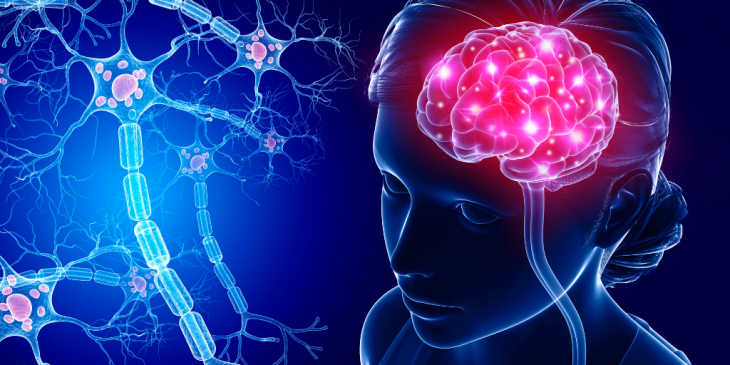
Stimulants cause a surge of chemical activity in your brain. Both prescription use, misuse, and illegal stimulant abuse produces increased energy, focus, and alertness.
The effects can make you feel more awake or energetic. They can also cause over-stimulation, leading to headaches, stomach cramps, anxiety, paranoia, and even seizures.
Despite the risks, stimulant abuse is a widespread public health issue. In 2018, the U.S. Department of Health and Human Services reported that 5 million Americans misused prescription stimulants at least once in the prior year and 400,000 Americans had prescription stimulant addiction.
But prescription pills are only one of the top five most commonly abused stimulants. Here’s the full list.
#1. Cocaine
 Hi. I’m cocaine. You know be by my white powder appearance and the surge of euphoria I produce when snorted or injected.
Hi. I’m cocaine. You know be by my white powder appearance and the surge of euphoria I produce when snorted or injected.
Once cocaine enters your system, it makes you high for about 15-30 minutes. This brief high is one reason the drug is considered extremely addictive. The shorter high makes people want to use repeatedly, which can mean that they quickly have to use larger amounts to feel the same effects.
In 2020, the National Survey on Drug Use and Health reported that about 5.2 million Americans aged 12 or older used cocaine in the past 12 months.
Signs of cocaine use include:
- Runny nose
- Dilated pupils
- Excitability
- Weight loss
- Nose bleeds
If someone uses cocaine regularly, it can cause:
- Nose damage (if snorted)
- Blood poisoning, damaged blood vessels, and skin abscesses (if injected)
- Heart problems
- Mental health issues such as depression, psychosis, hallucinations, and impaired cognitive functions
#2. Crack Cocaine
I’m crack cocaine–not to be confused with my close cousin, powder cocaine. I’m made of a combination of cocaine and baking soda, which is heated to create crystallized rocks. People then put those rocks in a tube or glass pipe (“crack pipe”) to smoke me.
Since smoking crack cocaine delivers smoke straight to the lungs and respiratory system, it deliver an immediate rush. The effect is quicker and stronger than cocaine, but the high is also shorter–lasting nor more than 15 minutes. Once the high ends, the person feels an immediate desire to use more crack. That’s one of the reasons people can become addicted to crack cocaine after just one use. And because of its intense effects on the body, even first-time users can have seizures and heart attacks.
Short-term effects of crack cocaine include:
- Dilated pupils
- Intense euphoria
- Aggression
- Hyper-stimulation
- Paranoia
- Constricted blood vessels
Long-term effects of crack cocaine include:
- Hallucinations
- Psychosis
- Severe depression
- Increasing risky behavior that endangers one’s personal health or safety
- Reproductive damage
- Risk of permanent health damage and death
Despite the risks, a National Institute on Health (NIH) survey found that 6.2 million Americans aged 12 or older used crack cocaine at least once.
#3. Methamphetamine
I’m methamphetamine, but people also call me Crystal Meth. This is because I come in white powder form or as tiny bluish crystals. Meth can be snorted, injected, smoked, or orally ingested.
When meth smoked or injected, it enters the bloodstream and brain quickly, causing an immediate high. This euphoria–called the “rush” or “flash”–only lasts a few minutes.
When snorted, meth causes effects within five minutes. And when taken by mouth, a person can feel the effects within 15 or 20 minutes. These methods of use also create a feeling of euphoria, but without the intense rush.
Meth can cause serious medical issues. No matter the route of administration, methamphetamine abuse can cause a high that lasts for hours, with or without the flash.
Potential effects include:
- Mental health symptoms
- High body temperatures
- Rapid or irregular heartbeat
- Severe itching
- “Meth mouth,” which is characterized by reduced saliva production and tooth damage
Common long-term effects of meth include:
- Anxiety
- Insomnia
- Hallucinations
- Paranoia
- Malnourishment and weight loss
- Moodiness
- Memory loss
- Severe dental problems
The 2020 NIH survey reported that 2.6 million Americans aged 12 or older had used some form of methamphetamine in the last year.
#4. Ecstasy
Many people call me ecstasy, but you may also know me as MDMA or Molly. I’m known as a “party drug” because I cause intense feelings of excitement and pleasure. After the high, however, people often feel depressed due to the sudden decrease of “feel good” chemicals in the brain. That’s why they have the urge to use again.
People usually take ecstasy as a capsule or tablet, but some snort a powder form or swallow as a liquid. The high created usually lasts up to six hours. If a person takes a large dose of ecstasy, it can cause a spike in body temperature that leads to kidney, liver, heart failure, or even death.
Effects of ecstasy include:
- Blurred vision
- Involuntary teeth clenching
- Muscle cramps
- Nausea
- Chills
- Sweats
Other longer-term effects of ecstasy include:
- Anxiety
- Sleep issues
- Depression
- Irritability
- Aggression
- Memory problems
- Decreased appetite
- Decreased pleasure from sexual activity
#5. Prescription Stimulants
 We’re a family of drugs that includes Ritalin, Adderall, and Dexedrine. We can be used legally to treat conditions such as ADHD and narcolepsy. If you don’t medically need us, prescription stimulant abuse can produce a “boost” or high, since we increase energy and attention.
We’re a family of drugs that includes Ritalin, Adderall, and Dexedrine. We can be used legally to treat conditions such as ADHD and narcolepsy. If you don’t medically need us, prescription stimulant abuse can produce a “boost” or high, since we increase energy and attention.
Prescription stimulants are usually found in pill form. The pills are either swallowed or broken down and snorted.
Prescription stimulant abuse can cause:
- Heart problems
- Stomach issues
- Nerve damage
- Anger
- Psychosis
- Paranoia
Long-term effects of prescription stimulant abuse include:
- Insomnia
- Anxiety
- Hypertension
- Cardiovascular complications
- Manic states
- Aggressiveness
- Stunted growth in youth
The National Institute on Drug Abuse reports that 5 million Americans have misused prescription stimulants at least once.
If you’re struggling with stimulant abuse, call
800-681-1058
(Sponsored)
to learn about your addiction treatment options.

